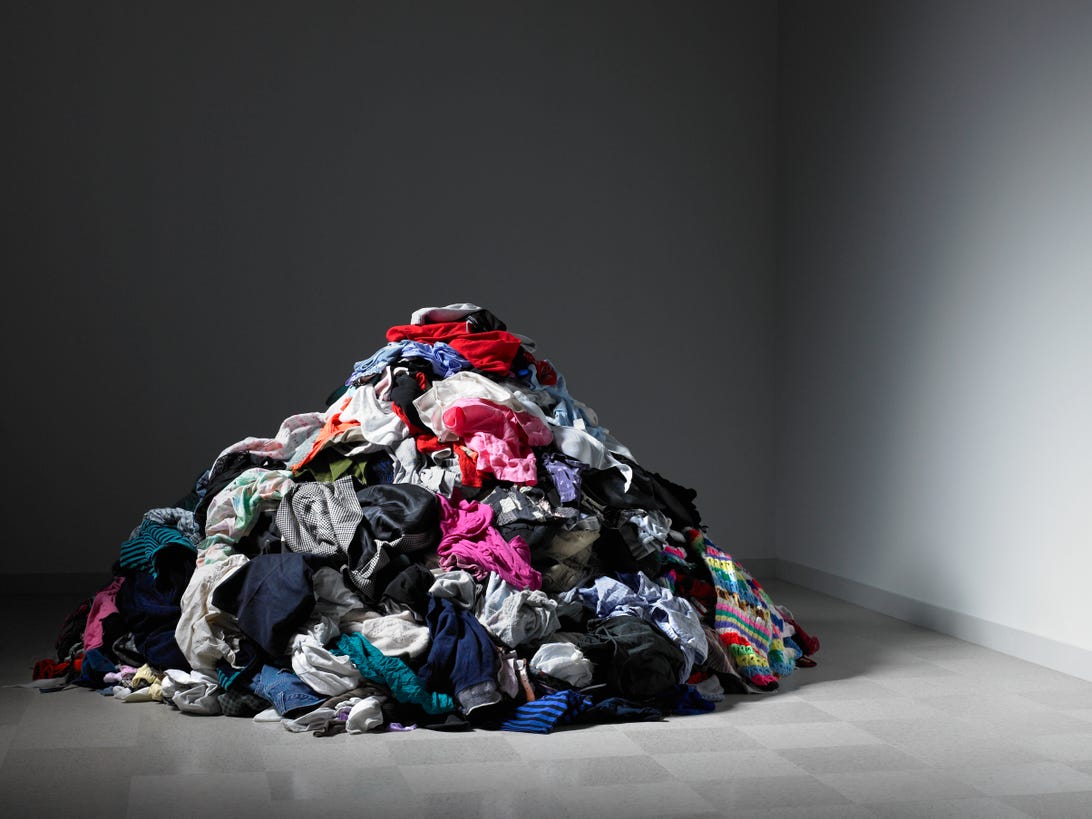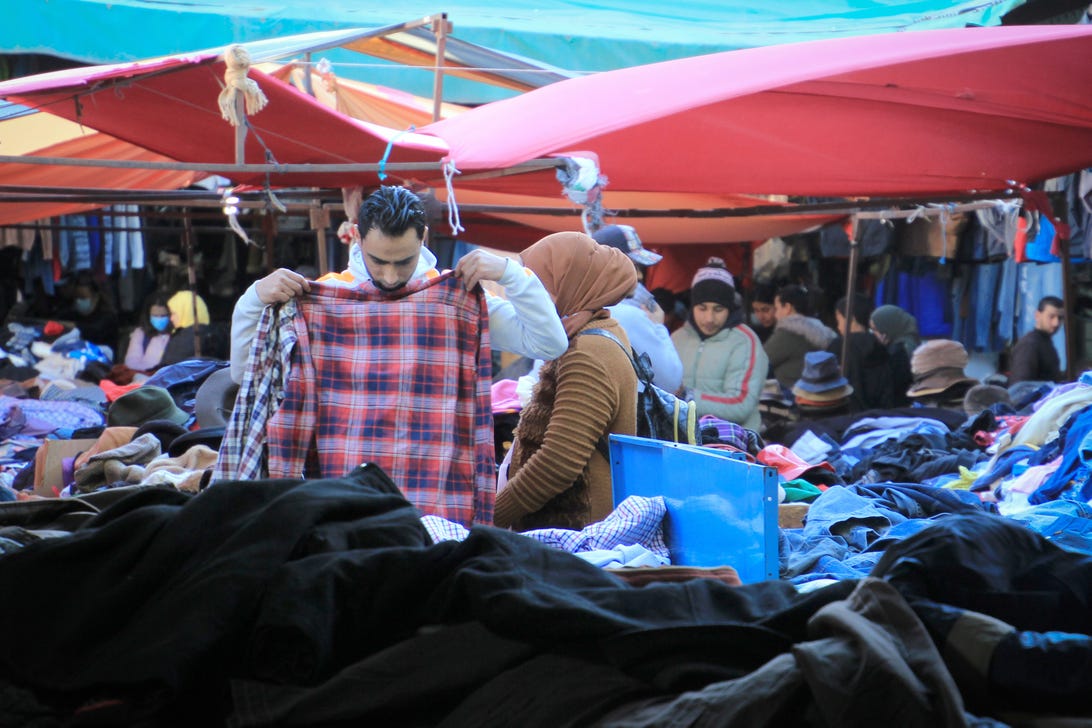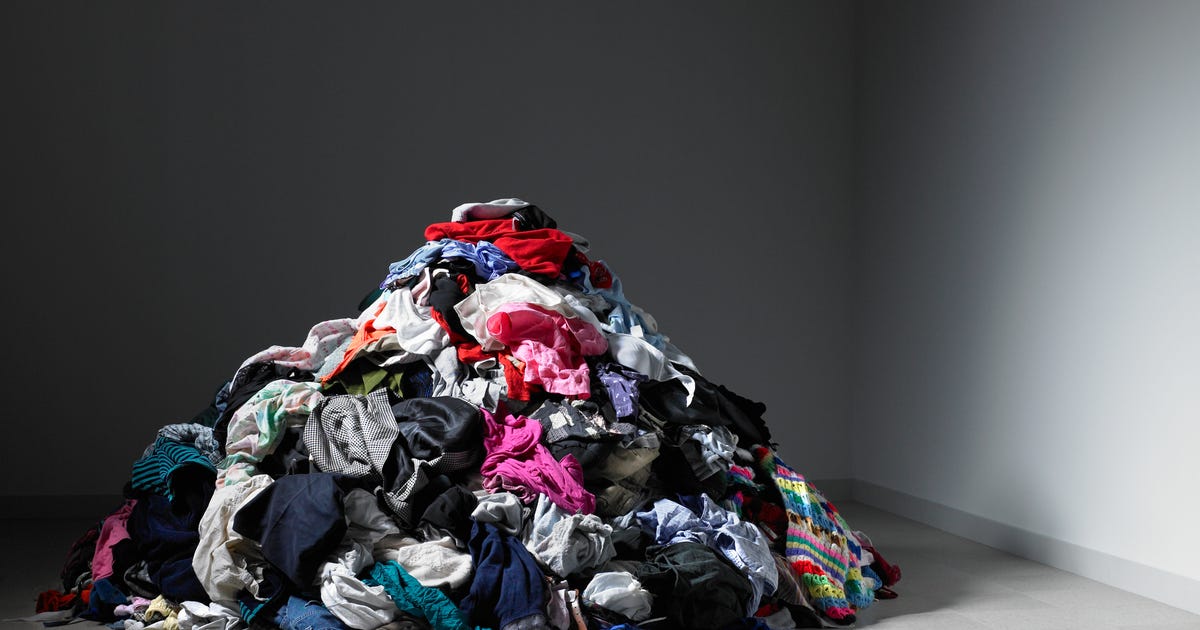Table of Contents

Experts say the most crucial detail you can do to restrict the effect of made use of apparel is to invest in fewer clothes.
Getty Photographs
A handful of several years in the past, I volunteered at a neighborhood Saint Vincent de Paul day center, whose clients involved lots of individuals living on the streets close by. My work was to type through a mountain of donated clothing, seeking for vivid blouses, customized coats and other gems that would help having difficulties people today served by the charity.
Not each individual merchandise, nonetheless, was value providing to shoppers. And all those clothing — a stained Gap T-shirt below, a badly ripped pair of trousers there — acquired tossed into a dumpster.
A lot more used garments are ending up in the garbage. We are getting a lot more rapid style, which cycles in and out of model speedily. Even although in general apparel product sales fell sharply for the duration of the pandemic, e-commerce attire revenue grew steadily. We had to make room for the new stuff, and time caught at house prompted us to clean out our closets, mind-boggling some charities with donations.
The donated garments you hoped would have a next life in your local community could possibly also finish up recycled into products and solutions like industrial rags, carpet padding or property insulation. In some cases, they are going to be transported in bales to Ghana, Uganda, Malaysia and other countries, in which shops will sift as a result of the apparel looking for prizes. Some e-commerce returns also end up transported overseas, according to Relaxation of Environment. Each the moment in a even though, an enterprising vendor overseas will offer a large excellent product to an individual in the US by listing it on Etsy or eBay.
E-commerce is fueling the cycle. By 2021, on the web gross sales accounted for nearly fifty percent of all attire purchases, in accordance to Digital Commerce 360. That calendar year, e-commerce apparel purchases rose 25%, to $181 billion.
When purchasing on the web, purchasers have a tendency to purchase extra dresses than they strategy to keep. More than 50 percent of shoppers advised e-commerce shopper service company Narvar in 2021 that they buy multiple measurements of the similar item with a plan to return what isn’t going to in shape. Some companies even let prospects preserve clothing that do not perform out, offering them even more dresses to donate or toss absent.
Although it’s difficult to quantify, e-commerce appears to travel extra purchases of outfits, said Neil Saunders, a retail analyst at GlobalData. On the web purchasing has exposed consumers to much more makes than they’d see in their community mall, and it can make it attainable to shop any time of working day, he stated.
“When there is additional opportunity to shop, there is a lot more impulse acquiring,” Saunders said of attire.
Below are four frequent fates that the garments you get rid of might come upon.
Recycled, but not into new garments
Your outdated glad rags could turn out to be genuine rags. The old clothes are obtained by recyclers and turned into things like rags for car detailing, stuffing for home furniture or soundproofing for autos, according to the Secondary Resources and Recycled Textiles Affiliation, or Good. Fiber recyclers collect outdated outfits directly from the donation packing containers you may see in parking a lot, or they invest in the apparel from charities.
That could not be the end result apparel donors envision for their old denims, explained Jackie King, head of Wise.
“They just assume that garments is just heading to go ideal back again out on the shelves,” she explained. “It isn’t going to always materialize like that”
But King emphasised fiber recycling has upsides. Fewer normal resources are used since much less new textiles are required to deliver all those products. Fiber recycling also retains people clothes from currently being burned or filling landfills, and it funnels income to the charities that market outfits to recyclers.
Old garments are seldom recycled into new clothes. That’s simply because most goods are manufactured from blends of natural and artificial fibers, building them tough to break down for new material.
For sale in faraway road marketplaces
Walk as a result of an outdoor market place in Accra, Ghana, and secondhand apparel from the US are on sale just about everywhere. You will see comparable wares on exhibit in other African countries. Importers invest in major bales of made use of garments and promote them to shops, who form the clothes by top quality. The bales appear from charities, which make funds for their functions by offering the bales, or from textile recyclers.

A employed clothes industry in Tunisia. Markets like this one particular give careers, but they also build squander that authorities say harms the encompassing communities.
Getty Photos
Not anyone in the importing nations around the world likes the move of used apparel, in aspect due to the fact it is competitiveness for regional producers. A group of four east African countries tried to ban the imports to safeguard their domestic textile industries, but only Rwanda managed the ban soon after the US government threatened tariffs on the countries’ clothing exports.
The apparel can also be a hazard. Investigation by the OR Foundation, a group advocating for far better fashion tactics in the US and Ghana, uncovered that unusable apparel overflowed from landfills and made air pollution when burned in open fires in Accra.
In the garbage
People trashed 9 million tons of clothing and footwear in 2018, according to the US Environmental Safety Company. Even if you donate it, the outfits could even now end up in the landfill.
Clothing that go abroad are also discarded at high premiums. Buyers choose a chance on each and every bale they can not go via it item by product initially. If they you should not like what they get, it really is likely likely to close up in the trash. The OR Foundation estimates that 40% of imported garments develop into squander. Mountains of outfits contributed to a huge landfill hearth in Accra in 2019, according to a report from the Australian Broadcasting Corporation, and long ropes of entwined dresses typically clean up on Ghana’s shorelines.
“Diverting apparel from landfills in the Worldwide North by dumping this extra on the World wide South is absurd,” wrote Liz Ricketts, head of the OR Foundation, in a piece describing the difficulties induced by shipping and delivery excessive garments to Ghana. “Calling this a solution, or referring to this as recycling, is even much more absurd.”
On Instagram and Etsy
Of program, some of the donated outfits is in fantastic shape. Some Ghanaian business enterprise homeowners look for out higher high-quality applied outfits at the street current market and curate them on social media.
Lia Akuoko, centered in Accra, posts applied apparel from the city’s made use of clothing current market on her Instagram account called lias_prettyfinds. Between her discoveries: a cropped leopard-print blazer, a purple wrap gown with spaghetti straps, and denims stamped with a butterfly motif and personalized by Akuoko.
“They mainly appreciate vibrant straight dresses,” Akuoko reported of her shoppers, texting above WhatsApp.
In Malaysia, some companies publish finds from bundles transported from Japan on resale internet sites aimed at US buyers. As soon as offered, the clothes make a further overseas vacation. The New York Periods reported in February that lots of Malaysian vendors article their listings on Etsy and eBay, and one particular vendor posts his luxurious Japanese trend finds on Grailed, a US-dependent men’s clothing resale web page.
Solutions to trashing outfits
The initially point advocates counsel for restricting the challenges brought on by applied clothes is to purchase much less outfits. Past that, you can make distinct options when you are ready to portion with your apparel, which normally entail handing off your togs right to their up coming owner.
This can transpire on resale websites, like eBay and PoshMark, where persons can record used clothing. It can also materialize on the net as a result of web sites like FreeCycle or Invest in Practically nothing teams on Facebook. If you might be sensation adventurous, you can also find out some mending and tailoring tactics to upcycle your very own clothing.
When your apparel are unusable, fiber recycling is likely your ideal wager. Donating by charities or assortment bins is the fastest way to do this. However, you won’t be able to be 100% guaranteed the fibers will get reused in industrial items instead of ending up as rubbish, possibly listed here or midway across the entire world.



